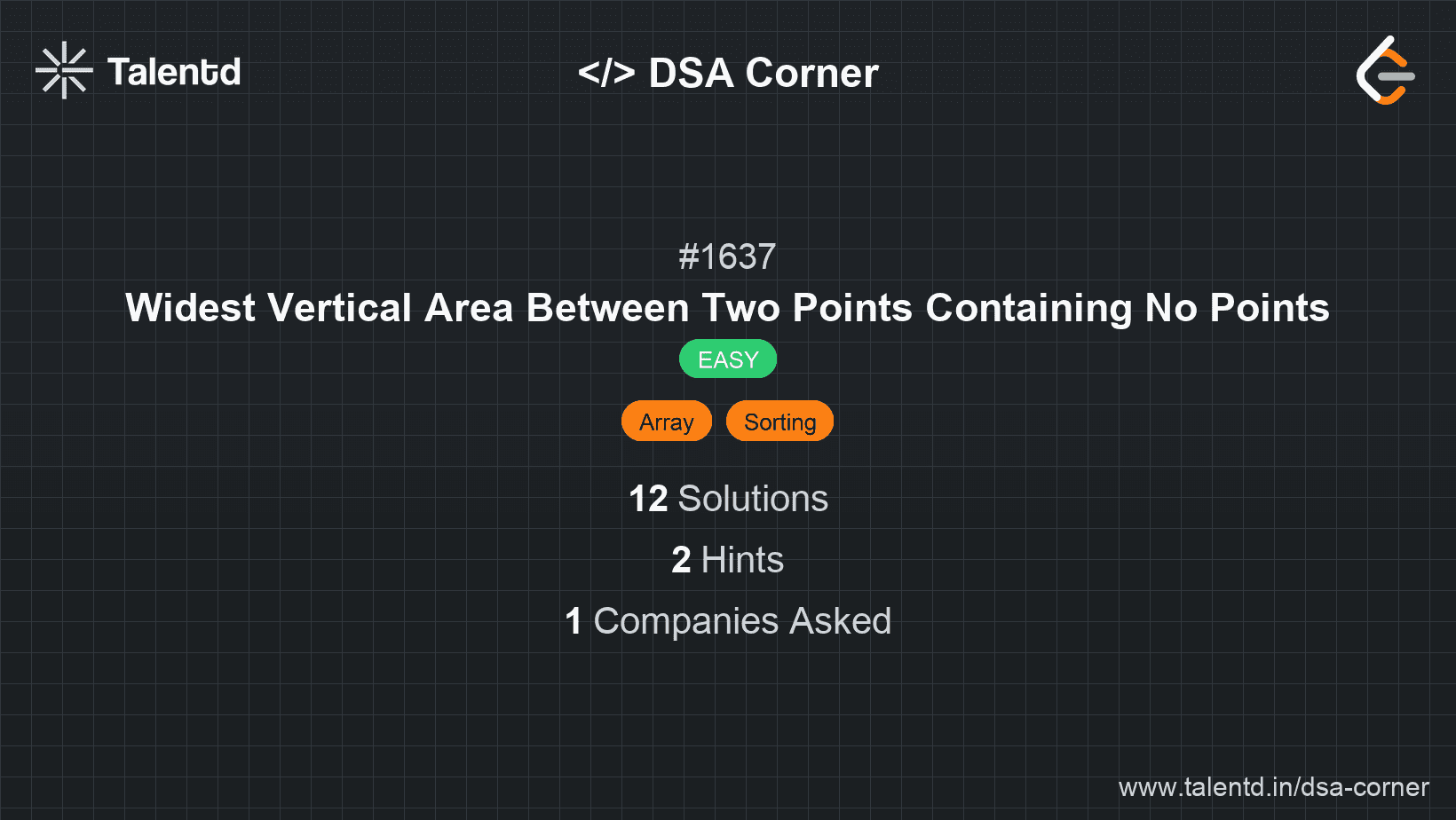
Sponsored
Sponsored
This approach involves sorting the x-coordinates of the points and then finding the maximum difference between consecutive sorted x-coordinates. This difference gives the widest vertical area between any two points.
Time Complexity: O(n log n), due to the sorting step.
Space Complexity: O(n), due to the additional array holding the sorted x-coordinates.
1using System;
2
3class Solution {
4 public int maxWidthOfVerticalArea(int[][] points) {
5 int[] xCoords = new int[points.Length];
6 for (int i = 0; i < points.Length; i++) {
7 xCoords[i] = points[i][0];
8 }
9 Array.Sort(xCoords);
10 int maxWidth = 0;
11 for (int i = 1; i < xCoords.Length; i++) {
12 maxWidth = Math.Max(maxWidth, xCoords[i] - xCoords[i - 1]);
13 }
14 return maxWidth;
15 }
16
17 static void Main() {
18 Solution solution = new Solution();
19 int[][] points = new int[][] { new int[] { 3, 1 }, new int[] { 9, 0 }, new int[] { 1, 0 }, new int[] { 1, 4 }, new int[] { 5, 3 }, new int[] { 8, 8 } };
20 Console.WriteLine(solution.maxWidthOfVerticalArea(points));
21 }
22}C# implementation involves creating an array for x-coordinates, sorting it, and then determining the maximum vertical area width.
Although not commonly necessary due to the constraints provided, if x-coordinates were to be over a smaller range, a variant of bucket sort could be used to place x-coordinates in a collection of buckets. This helps find consecutive x-coordinate gaps in nearly constant time, potentially improving performance by eliminating the general-purpose sort with more specialized data placement.
Time Complexity: O(n) expected when bucket conditions are met.
Space Complexity: O(m) where m is the bucket range size.
Aspired as an extension of distribution mechanisms over sort reliance, this tactic better fits constrained key situations, not current problem statements.